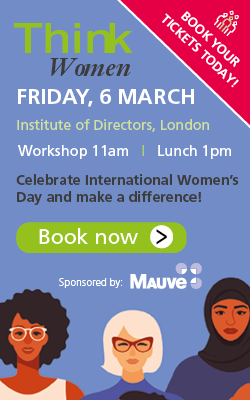What will the CEO of the future look like?
The way that CEOs lead is changing. Marianne Curphey looks at how this role has adapted for the better.

The hero leader is obsolete
For a long time, a true leader was seen as someone who was an all-powerful visionary, ruling his or her company by will and sheer force of personality. As the world changes, innovation and fresh thinking have become more important and it has become clear that no single person has all the answers.The era of the hero leader is over, say Phil Renshaw and Jenny Robinson, leadership development experts and co-authors of a new book, Coaching on the Go. Smart companies are now run by people who understand the importance of input from all sections of the workforce, rather than thinking that the C-suite always knows best. “For too long, business schools and consultants have peddled the notion that leaders are at the front of culture change and their job is to ‘sell’ it to others,” they say. “Now, there is a new set of ideas taking inspiration from the origins of the word leadership, which lie in the Norse word 'laed' – to set a direction for a ship. Hero leadership is no longer an answer because no leader leads alone.”Great leaders in today’s world are coaches and communicators, as well as strategists. Force of personality is not the route to being effective. “Allowing people to be heard, particularly their resistance or scepticism, resolves into motivation and a desire to succeed together. Complexity and ambiguity are now the norm. Instead of seeking to build certainty, which can only be a temporary mirage at best, we encourage CEOs and senior leaders to declare the very existence of uncertainty and its potential impact as they work collaboratively across functions and business areas.”Join us at Think Women on 6 May at the IoD in London to hear more inspiring stories from women in international careers, juggling family responsibilities, starting out or changing direction. Discover how you can make a difference in your organisation, community or to your own career progression.

A new Darwinian world of change and survival
“If you are going to survive these days, you’ve got to have a Darwinian approach,” says Linda Jackson, CEO of Citroen. “The wind changes so quickly. The car industry is facing changes in the form of autonomous cars, new models of vehicle ownership and electric cars. You have to think outside the box and react quickly and you can’t do this if you are not agile as a business.”She says that in terms of staff, it is most important to explain why you are making changes. “People accept change if they understand why. I have taken steps to change the way we work – no meetings after 6pm or before 8am and I do not expect staff to respond to emails at the weekend. We have a no-blame culture, which encourages people to come up with ideas and maintain a start-up mentality.”The new CEO is resilient
Introducing real cultural change requires a combination of bold thinking with the vision to see what the ramifications of change will be, with a leadership team that can be consistent in delivering the message, says Justin Hobday, CEO of Carmichael Fisher, the executive search company. This means you won’t always be popular.Resistance to change from somewhere in the business is guaranteed, so it is critical that leaders are resilient. “Change is development and progression, and as long as your intentions are good, it should be met with enthusiasm. But don’t assume this. People need to have the picture painted of what you are striving to achieve,” he says.Communication, regularly and often, is vital. If change isn’t communicated, you leave your team feeling isolated and alone rather than involved and included. Mr Hobday adds, “It’s not enough to be a powerful man or woman with a closed-door glass office. It’s important to be visible and to fully understand what is going on within the business.”Related articles
- CIPD 2019: Bringing good work to life with coaching
- Taking the temperature of the UK workplace
- CEO pay data prompts questions of fairness
The new CEO communicates and listens to feedback – even when it is painful – because your employees will be your biggest critics. “As a CEO, it can be easy to get overwhelmed with decision-making and operational logistics that come from discussions within the C-Suite,” says Suki Sandhu, founder and CEO of Audeliss, an executive search firm. “The C-Suite is rarely fully representative of what the company is or wants to become – especially when it comes to diversity of thought.”By encouraging an open flow of communication and respect that includes everyone and not just the loudest voices, a positive company culture will follow. However, that doesn’t mean that the new CEO has to have all the answers. "Over the past 10 years I’ve seen a shift in CEOs from believing they must have all the answers to realising that their job is to get the best people around the table and create ways of exploring and experimenting to find the best way forward,” says Debbie Rynda, a leadership coach with Aziz Corporate who has worked with many CEOs over the years.“I’ve seen huge weights lifted from one CEO’s shoulders when he grasped the difference in knowing all the answers and his new challenge of leading the way to find the answers.”
Relocate’s Think Women lunch will be held on 6 March at the Institute of Directors, London as part of the celebrations for International Women’s Day. Join us to hear from, and network with, inspiring women and men. Support women and girls to progress in international careers.

The new CEO will set the standards for diversity
While change may come from the top, it’s nothing without company-wide buy-in, says Tara McGeehan, president of CGI UK Operations and senior sponsor of the UK Diversity programme. “An inclusive and diverse workforce is a stronger and better performing one,” she says. “My tip to any budding CEOs who want to create an inclusive workforce is to put their money where their mouth is. Invest in practical initiatives such as unconscious bias training for management and harness technology to ensure the language used in job specifications is gender-neutral.“My drive for a diverse and gender-equal workforce is two-fold: firstly, because it makes obvious sense, and secondly because if we only fish in the same pond where there are a few blokes on a degree course, we’re not going to fill our positions.”Inclusivity is vital, says Helen Jamieson, founder and MD of Jaluch, a HR and leadership training consultancy that works with the likes of Visa, Bupa and Ageas and public sector organisations and charities such as the IPCC and Great Ormond Street Hospital Charity. “Lead the way through your own behaviours and actions and never hesitate to hold other senior people to account if they do not follow your lead or if they continue to act in line with the old-style culture,” she adds. “Many CEOs have been trained up across decades to push forward, drive forward irrespective of how people feel about that. It is a new concept to many CEOs to work out how to bring people along with them because they want to be brought along, as opposed to just doing ‘it’ because that is what they are told to do.”The new CEO takes a proactive approach to employee welfare
Workforce dynamics have rapidly shifted in recent years, with employees becoming more vocal about their needs, says Peakon’s co-founder and CEO, Phil Chambers. “Gone are the days when an employee would stay with a company for half of their career. Modern employees want a consumer-like experience from their workplace, and business leaders and CEOs need to adapt if they want to attract and retain the best talent.”Peakon is an employee success tool that allows business leaders to better understand the sentiment and feedback of their employees. It encourages CEOs to introduce reverse mentoring, where a senior employee is partnered up with a younger colleague who mentors them on a topic or simply provides a fresh perspective on the business. “By reframing the idea of who can be a mentor, you open up your organisation to all sorts of learning possibilities,” Mr Chambers says.A CEO used to lead from the top of a triangle, but now leads from the centre of a circle, says Katie Lee, CEO of advertising agency Lucky Generals. “This means that spending time with your team is an absolute priority and, in return, they are empowered to lead from the centre of their circles. This allows for a much flatter and more inclusive workplace, which helps bring people on the journey.”People really care about value-led organisations and want their leaders to live by those values, she says. It’s not just about what you say, but how authentically you live those values every day. You can’t fake it.The new CEO may be part of a rotating boardroom
Technology is now becoming so integral to all businesses that those with IT skills will need to be part of boardroom decision-making. “Looking to the future, I predict significant growth in the role that ‘techies’ will occupy in their businesses,” says Ben Taylor, CTO of Rainbird. “Historically, these employees have been either siloed away in the IT department or left to occupy a single board seat; I see them quickly becoming fundamental to any firm. This is due to the technical skills that will be crucial to any successful CEO, along with business knowledge and an entrepreneurial background, all of which will be indispensable to any CTO or CISO.”This idea of a ‘floating’ C-suite will involve businesses and technical roles increasingly becoming intertwined, to the point where there could be shared or even rotating seats at the heart of the future board. There is already evidence for this: from Huawei rotating the role of its CEO every six months and the co-founders of UK fintech start-up Transferwise switching CEO roles. “I see these changes as inevitable as organisations are forced to adapt to a disruptive business environment in a constant state of flux,” Mr Taylor says.Relocate’s Think Women lunch will be held on 6 March at the Institute of Directors, London as part of the celebrations for International Women’s Day. Hear from, and network with, inspiring women and men. Support women and girls to progress in international careers.
Similar Think Women events will be held in EMEA, APAC and the Americas later in the year and virtually. Contact us at events@relocatemagazine.com to find out how you can be involved in your area.
Read more articles on Leadership & Management.
Subscribe to Relocate Extra, our monthly newsletter, to get all the latest international assignments and global mobility news.Relocate’s new Global Mobility Toolkit provides free information, practical advice and support for HR, global mobility managers and global teams operating overseas. Access hundreds of global services and suppliers in our Online Directory
Access hundreds of global services and suppliers in our Online Directory
©2025 Re:locate magazine, published by Profile Locations, Spray Hill, Hastings Road, Lamberhurst, Kent TN3 8JB. All rights reserved. This publication (or any part thereof) may not be reproduced in any form without the prior written permission of Profile Locations. Profile Locations accepts no liability for the accuracy of the contents or any opinions expressed herein.







































